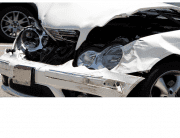What is Degenerative Scoliosis?
Degenerative scoliosis is also known as adult onset scoliosis or adult scoliosis. This is a side to side spine curvature caused by facet joints degeneration. The condition is common among the people who are above 65 years of age. Arizona workers compensation or Phoenix workers compensation may benefit you.
What causes Degenerative scoliosis?
Degenerative scoliosis occurs when the facet joints deteriorates gradually. The pressure from the deteriorating facets joints makes the straight spine shift making them curve on one side.
The cost may be expensive and you may need AZ workers compensation. Other causes associated with degenerative scoliosis include:
- Unsuitable/insufficient physical activity
- Lumbar imbalance
- Incorrect posture
- Gravity (affecting the curve progression)
When these causes come together, they create abnormal spinal curve.
What are the Symptoms of Degenerative Scoliosis?
Facets joints act as hinges when healthy since they help with easier bending of the spine. In some situations, the aging process erodes the cartilages that guard the joints. This same erosion process which is similar to that of osteoarthritis, makes the joints to become inflamed and irritated. Typical symptoms of degenerative scoliosis include:
- Pain in one or both legs when walking or standing
- Pain when walking or standing
- The pain becomes worse in the mornings
- Pain comes gradually
How is Degenerative Scoliosis Diagnosed?
Spine surgeons have unique skills to deal with degenerative scoliosis. Any pre-existing back pain or changing spinal disorder needs to be reported to the doctor with immediate effect. An accurate diagnosis is essential for a fruitful and efficient treatment plan.
The doctor may ask the following are questions during the diagnosis process.
- When did the symptoms begin and what changes taken place?
- Have you ever had back surgery?
- Does your family have a history of adult scoliosis?
The neurological, physical history and medical history examinations are very crucial in the diagnosis process. The physician and the patient will discuss the symptoms, treatment used and the severity of the condition.
The physician will evaluate and make tests of;
- muscle strengths
- signs of neurology
- Loss of feelings.
- Balance problems
- Difficulties in movement
- Ability to bend forward, backward on the waist and sideways.
Diagnostic tools used include MRI scans, myelography, CT, and X-rays. These are used to enhance the examination of the nerve roots and spinal cord.
What are the Treatments Options of Degenerative Scoliosis?
Treatment options vary as different patients will experience different kinds of degenerative scoliosis. In some situations, lifestyle changes such as smoking cessation, eating healthy and losing weight will help to control the situation. However, there are situations that will require the intensive procedures such as:
Non-Steroidal Anti-inflammatory Medications: These medication methods helps to reduce amount of inflammation and pain in joints. Even though some drugs are available over the counter, it is wise to consult a doctor to determine if you are the right candidate for these medicines.
Epidural Steroid Injections: These can be administered to patient who experience lower pain due to degenerative scoliosis. Even though the epidural steroid does not cure this condition, used with the right exercise program, the results are an impressive relief.
Exercises: A good exercise program is essential in treating scoliosis in adults. The therapists will recommend the right exercises that will help to strengthen back and stomach muscles. Doctors also advise on the right ways of undertaking daily activities to reduce back pain.
Surgery: Surgery is the last option, only fit for those who have suffered progressive changes in the joints or when conservative measures fail to work. Often the primary aim of the operation is not to straighten the spine but to limit the curve from getting worse.






Leave A Comment